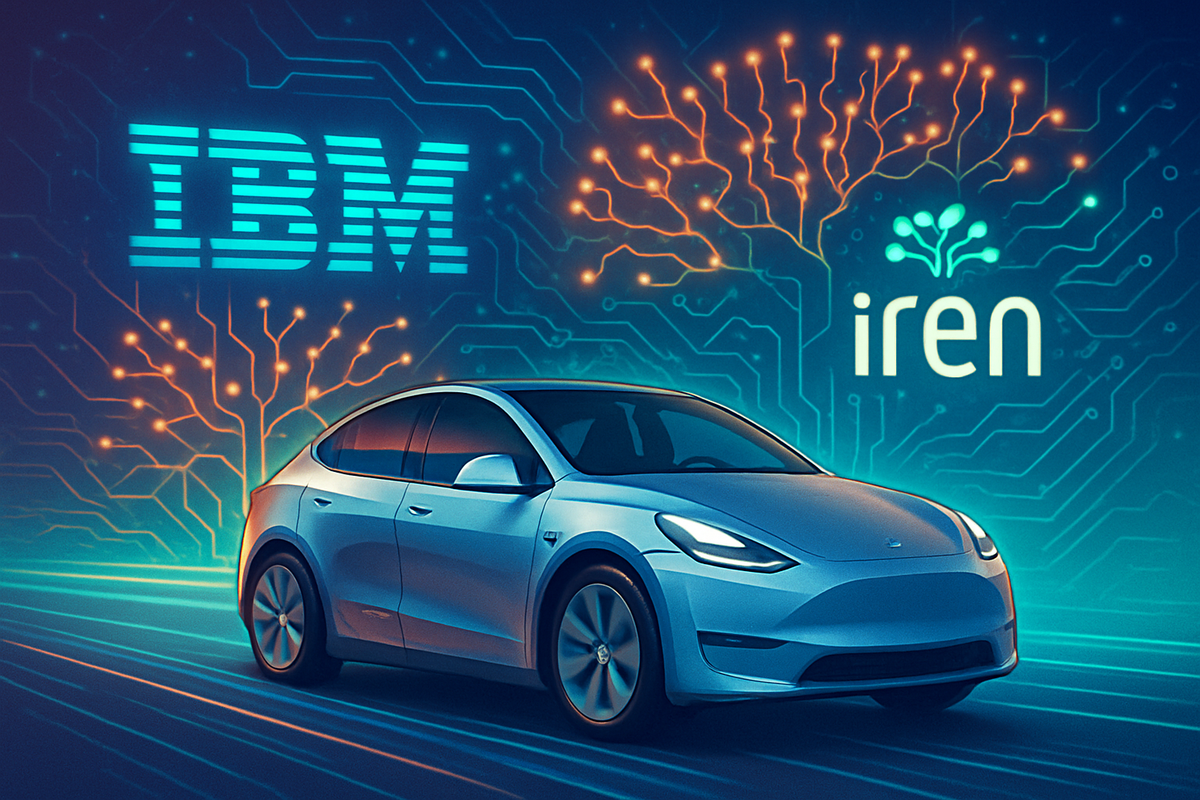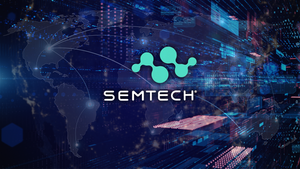
In a day marked by significant shifts in both the automotive and technology sectors, Tesla (NASDAQ: TSLA) is poised to unveil a long-anticipated, cheaper variant of its popular Model Y SUV, a move expected to reinvigorate sales and broaden its market appeal. Simultaneously, tech giants and emerging players are doubling down on artificial intelligence, with IBM (NYSE: IBM) announcing pivotal partnerships and product launches, and Iren (NASDAQ: IREN), formerly a Bitcoin miner, cementing its dramatic pivot to become a major AI cloud infrastructure provider. These developments, unfolding on October 7, 2025, signal a dynamic period for investors and consumers alike, highlighting the relentless pursuit of innovation and market share in key industries.
The expected arrival of a more accessible Tesla Model Y comes at a crucial juncture for the electric vehicle (EV) giant. With global competition intensifying and the recent expiration of the $7,500 U.S. federal EV tax credit on September 30, 2025, an affordability push from Tesla is strategically timed. This move is designed to attract a wider demographic, particularly first-time EV buyers, by addressing the price barrier that has historically limited EV adoption. The market has reacted with palpable enthusiasm, demonstrating investor confidence in Tesla's ability to maintain its competitive edge through strategic pricing.
A Closer Look at the Market-Moving Announcements
Tesla's anticipated announcement today, October 7, 2025, centers around a "Standard" or "Standard Range" Rear-Wheel Drive (RWD) Model Y variant. Rumors have swirled for nearly a year, with CEO Elon Musk hinting at a "stripped-down" version. This new model is expected to be priced around $39,990 in the U.S., positioning it approximately $5,000 below the current least expensive Model Y. To achieve this, Tesla has implemented several cost-saving modifications, including a redesigned front end, new 18-inch "Aperture" wheels, and interior simplifications such as a manually adjustable steering wheel and the omission of the rear-seat infotainment screen and panoramic moonroof. Despite these changes, it will retain the 15.4-inch central touchscreen. This strategic pricing aims to offset the impact of the expired federal tax credit and stimulate demand.
In the realm of artificial intelligence, October 7, 2025, also marks a significant day for IBM. The tech behemoth announced a strategic partnership with leading AI firm Anthropic, integrating Anthropic's Claude large language model (LLM) into select IBM software products, starting with "Project Bob," a new AI-first integrated development environment (IDE) that has already shown internal productivity gains of 45%. Concurrently, IBM unveiled the upcoming general availability of its Spyre Accelerator, an AI accelerator designed for low-latency inferencing in generative and agentic AI, compatible with IBM z17, LinuxONE 5, and Power11 systems. These announcements build on a flurry of recent AI activities, including the launch of Granite 4.0 enterprise-ready LLMs on October 2, 2025, and a multi-year collaboration with AMD (NASDAQ: AMD) to deliver advanced AI infrastructure to open-source AI research company Zyphra on October 1, 2025. IBM's "AI-first" strategy emphasizes trusted, efficient, and domain-relevant AI solutions within a hybrid cloud environment, focusing on specialized models for enterprise clients.
Meanwhile, Iren (NASDAQ: IREN), formerly known as Iris Energy Limited, has further solidified its pivot from Bitcoin mining to high-performance AI cloud infrastructure. On October 7, 2025, the company announced securing additional multi-year agreements with AI firms for its Nvidia (NASDAQ: NVDA) Blackwell GPU deployments. These contracts now cover 11,000 GPUs, representing approximately $225 million in annualized recurring revenue (ARR) expected to be operational by the end of 2025. This follows a massive $674 million procurement announced on September 22, 2025, to double its AI Cloud fleet to roughly 23,000 GPUs, including Nvidia Blackwell series and AMD MI350X chips. Iren's strategy leverages its vertically integrated model, owning sites and controlling renewable power contracts, to build hyperscale data centers like its new 75MW liquid-cooled facility in Sweetwater, Texas, specifically designed for demanding AI workloads.
Potential Winners and Losers in the Evolving Landscape
The introduction of a cheaper Tesla Model Y is a clear win for Tesla (NASDAQ: TSLA) itself, aiming to boost sales volume and market share in an increasingly competitive EV landscape. While a lower price point might initially raise concerns about gross margins, Tesla's efficiency in production and vertical integration could mitigate this impact. The move is also a win for consumers, who gain access to a more affordable entry point into the premium EV market. However, it could put pressure on other EV manufacturers, particularly those in the budget-friendly segment, who now face a more direct and formidable competitor. Companies like General Motors (NYSE: GM), Ford (NYSE: F), and various Chinese EV makers such as BYD (HKEX: 1211), Zeekr (NYSE: ZK), and NIO (NYSE: NIO), which have been making inroads with more affordable electric options, will need to reassess their pricing and feature strategies.
IBM (NYSE: IBM) stands as a significant winner from its aggressive AI strategy. Its partnerships with companies like Anthropic and AMD, coupled with its proprietary Granite LLMs and Spyre Accelerator, position it as a formidable player in enterprise AI. The focus on secure, governable, and specialized AI solutions for industries like financial services and healthcare aligns with the complex needs of its corporate clients. The positive market reaction, with IBM shares rising towards an all-time high, reflects investor confidence in its "AI-first" transformation. Companies heavily invested in generic, large-scale LLMs without specific enterprise applications might find themselves at a disadvantage as IBM pushes for more tailored and efficient solutions.
Iren (NASDAQ: IREN) is emerging as a clear winner from its strategic pivot to AI cloud infrastructure. By leveraging its existing energy infrastructure and expertise, it has successfully transitioned from the volatile Bitcoin mining sector to the booming demand for AI computing power. The substantial AI cloud contracts and ambitious revenue targets underscore the market's reception to this shift. This move diversifies its revenue streams and offers higher potential returns per megawatt compared to Bitcoin mining. Traditional data center providers who have been slower to adapt to the specialized cooling and power demands of hyperscale AI, or those without Iren's vertically integrated, renewable energy focus, might face increased competition from this agile newcomer.
Wider Significance and Industry Ripple Effects
Tesla's move to introduce a cheaper Model Y is indicative of a broader trend in the automotive industry: the race to mass-market EV adoption. As battery costs decline and manufacturing efficiencies improve, automakers are increasingly focusing on affordability to overcome price sensitivity and expand the EV customer base. This strategy could accelerate the transition away from internal combustion engines, but it also necessitates a delicate balance between price, features, and profitability. Regulatory bodies globally are pushing for stricter emission standards, and an affordable Model Y could help governments meet EV adoption targets, potentially influencing future policy decisions regarding incentives or infrastructure. Historically, price reductions have often led to market share gains, but sustained profitability remains a key challenge for all EV manufacturers.
IBM's comprehensive AI strategy signifies a maturing phase in enterprise AI. The emphasis on smaller, specialized LLMs, agentic workflows, and secure hybrid cloud deployments reflects a shift from experimental AI to practical, scalable business applications. This approach sets a precedent for how large enterprises can integrate AI responsibly and effectively, potentially influencing other legacy tech companies to adopt similar tailored strategies rather than a one-size-fits-all approach. The focus on sustainable AI, with energy-efficient hardware and models, also addresses growing environmental concerns, potentially setting new industry standards for AI development and deployment.
Iren's dramatic pivot highlights the immense capital and infrastructure requirements of the AI revolution. Its success demonstrates that companies with existing energy and infrastructure assets can reposition themselves to capitalize on new technological demands. This could inspire other industrial players with large-scale energy infrastructure to explore similar transitions, further decentralizing AI compute power and diversifying the supply chain beyond traditional cloud providers. The company's commitment to renewable energy for its AI operations also aligns with increasing ESG pressures on the tech sector, potentially attracting a new wave of environmentally conscious AI clients and investors.
What Comes Next: Navigating the Future
In the short term, the market will closely watch Tesla's (NASDAQ: TSLA) sales figures for the cheaper Model Y to gauge the immediate impact of its pricing strategy. Investors will also scrutinize Tesla's gross margins to see how effectively the company can balance increased volume with profitability. Competitors are likely to respond with their own pricing adjustments or new, more affordable EV models, intensifying the price wars. Long-term, this move could solidify Tesla's position as a dominant force in the global EV market, but sustained innovation in battery technology and manufacturing processes will be crucial to maintain its competitive edge.
For IBM (NYSE: IBM), the immediate future involves the rollout and adoption of its new AI offerings, including the Anthropic-integrated software and Spyre Accelerator. The company will need to demonstrate tangible productivity gains for its clients and expand its AI-related business, which already reached $5 billion by March 2025. Strategic pivots will focus on continuously enhancing the watsonx platform and expanding its consulting services to guide enterprises through complex AI transformations. The market will look for continued revenue growth from its AI segments and successful integration of its various AI initiatives into a cohesive, enterprise-grade solution.
Iren (NASDAQ: IREN) faces the task of rapidly deploying its expanded AI cloud fleet and delivering on its ambitious revenue targets, aiming for over $500 million in annualized run-rate revenue by Q1 2026. Key challenges include managing potential GPU shortages, navigating evolving energy regulations, and competing with established cloud giants. However, its low-cost structure, renewable power pipeline, and clear AI focus provide a strong foundation. Market opportunities include attracting more AI firms seeking dedicated, high-performance computing power and potentially expanding its data center footprint to meet ever-growing demand.
Comprehensive Wrap-Up and Investor Outlook
Today's announcements underscore a period of rapid evolution across critical sectors. Tesla's strategic move with an affordable Model Y highlights the automotive industry's pivot towards mass-market EV adoption, driven by both consumer demand and competitive pressures. The immediate market enthusiasm for Tesla (NASDAQ: TSLA) stock suggests that investors view this as a positive step towards sustaining growth, though margin performance will be a key metric to monitor.
In the technology space, IBM's (NYSE: IBM) aggressive push into enterprise AI, characterized by strategic partnerships and specialized solutions, positions it as a leader in responsible and practical AI integration. Its strong year-to-date performance and positive analyst outlook reflect confidence in its "AI-first" transformation. Meanwhile, Iren's (NASDAQ: IREN) successful pivot from crypto mining to AI cloud infrastructure showcases the adaptability required in today's fast-changing tech landscape, transforming it into a crucial supplier for the AI revolution. Its impressive stock surge and ambitious revenue targets make it a compelling story of strategic diversification.
Moving forward, investors should watch for Tesla's sales reports and margin trends, as well as any competitive responses from other automakers. For IBM, the focus will be on the successful implementation and client adoption of its AI offerings and continued growth in its AI-related revenue. For Iren, the key will be the timely deployment of its GPU fleet and the realization of its aggressive revenue targets from AI cloud services. These events collectively paint a picture of markets in flux, where innovation, strategic adaptation, and affordability are key drivers of future success.
This content is intended for informational purposes only and is not financial advice





